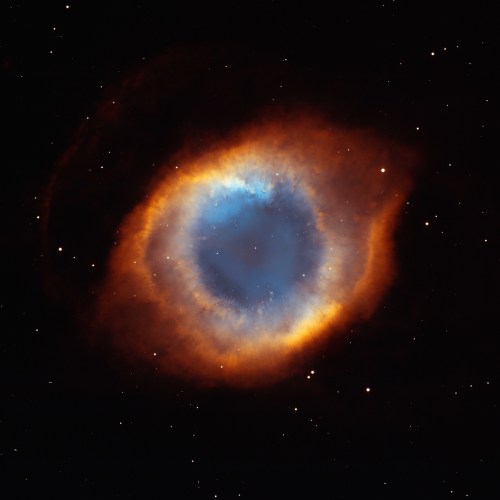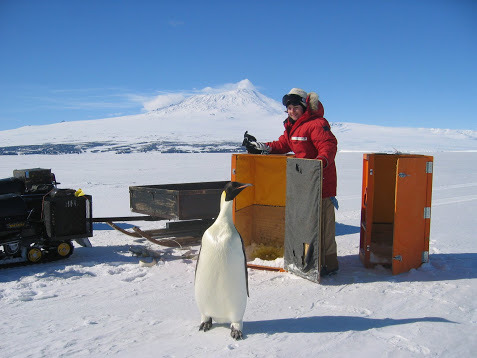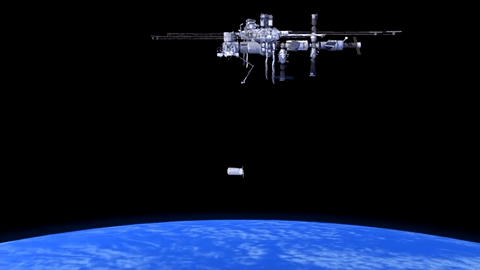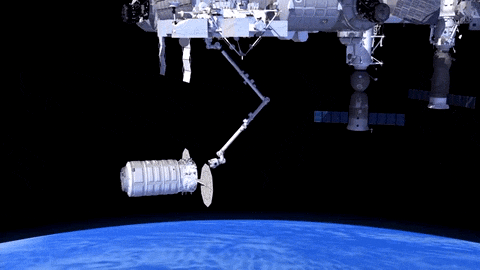Pinpointing The Cause Of Earth’s Recent Record CO2 Spike
Pinpointing the Cause of Earth’s Recent Record CO2 Spike
A new NASA study provides space-based evidence that Earth’s tropical regions were the cause of the largest annual increases in atmospheric carbon dioxide concentration seen in at least 2,000 years.
What was the cause of this?
Scientists suspect that the 2015-2016 El Niño – one of the largest on record – was responsible. El Niño is a cyclical warming pattern of ocean circulation in the Pacific Ocean that affects weather all over the world. Before OCO-2, we didn’t have enough data to understand exactly how El Nino played a part.

Analyzing the first 28 months of data from our Orbiting Carbon Observatory (OCO-2) satellite, researchers conclude that impacts of El Niño-related heat and drought occurring in the tropical regions of South America, Africa and Indonesia were responsible for the record spike in global carbon dioxide.

These three tropical regions released 2.5 gigatons more carbon into the atmosphere than they did in 2011. This extra carbon dioxide explains the difference in atmospheric carbon dioxide growth rates between 2011 and the peak years of 2015-16.

In 2015 and 2016, OCO-2 recorded atmospheric carbon dioxide increases that were 50% larger than the average increase seen in recent years preceding these observations.

In eastern and southern tropical South America, including the Amazon rainforest, severe drought spurred by El Niño made 2015 the driest year in the past 30 years. Temperatures were also higher than normal. These drier and hotter conditions stressed vegetation and reduced photosynthesis, meaning trees and plants absorbed less carbon from the atmosphere. The effect was to increase the net amount of carbon released into the atmosphere.

In contrast, rainfall in tropical Africa was at normal levels, but ecosystems endured hotter-than-normal temperatures. Dead trees and plants decomposed more, resulting in more carbon being released into the atmosphere.

Meanwhile, tropical Asia had the second-driest year in the past 30 years. Its increased carbon release, primarily from Indonesia, was mainly due to increased peat and forest fires - also measured by satellites.

We knew El Niños were one factor in these variations, but until now we didn’t understand, at the scale of these regions, what the most important processes were. OCO-2’s geographic coverage and data density are allowing us to study each region separately.
Why does the amount of carbon dioxide in our atmosphere matter?
The concentration of carbon dioxide in Earth’s atmosphere is constantly changing. It changes from season to season as plants grow and die, with higher concentrations in the winter and lower amounts in the summer. Annually averaged atmospheric carbon dioxide concentrations have generally increased year over year since the 1800s – the start of the widespread Industrial Revolution. Before then, Earth’s atmosphere naturally contained about 595 gigatons of carbon in the form of carbon dioxide. Currently, that number is 850 gigatons.

Carbon dioxide is a greenhouse gas, which means that it can trap heat. Since greenhouse gas is the principal human-produced driver of climate change, better understanding how it moves through the Earth system at regional scales and how it changes over time are important aspects to monitor.

Get more information about these data HERE.
Make sure to follow us on Tumblr for your regular dose of space: http://nasa.tumblr.com.
More Posts from Nasa and Others
Exploration in Extreme Environments: Under Water and in Outer Space
Living in the depths of the sea…to prepare for travel in deep space.
Sounds strange, but that’s what our NEEMO expedition aims to do.

This 10-day NASA Extreme Environment Mission Operations (NEEMO) 22 expedition is slated to begin on June 18. NEEMO 22 will focus on both exploration spacewalks (or in this case waterwalks?) and objectives related to the International Space Station and deep space missions.
Analog (noun): is a situation on Earth that produces effects on the body similar to those experienced in space, both physical and mental/emotional. These studies help us prepare for long duration missions.

As an analog for future planetary science concepts and strategies, marine science also will be performed under the guidance of Florida International University’s marine science department.

NASA astronaut Kjell Lindgren will command the NEEMO 22 mission aboard the Aquarius laboratory, 62 feet below the ocean surface near Key Largo Florida. Lindgren was part of the space station Expeditions 44 and 45 in 2015, where he spent 141 days living and working in the extreme environment of space. He also conducted two spacewalks.
Fun Fact: These underwater explorers are referred to as “aquanauts”

Lindgren will be joined by ESA (European Space Agency) astronaut Pedro Duque, Trevor Graff, a Jacobs Engineering employee working as a planetary scientist at our Johnson Space Center; and research scientists Dom D’Agostino from the University of South Florida and the Florida Institute of Human and Machine Cognition.
While living underwater for 10 days, the crew will:
Test spaceflight countermeasure equipment
Validate technology for precisely tracking equipment in a habitat
Complete studies of body composition and sleep
Assess hardware sponsored by ESA that will help crew members evacuate someone who has been injured on a lunar spacewalk

Why do we use Analog Missions?
Analog missions prepare us for near-future exploration to asteroids, Mars and the moon. Analogs play a significant role in problem solving for spaceflight research.
Not all experiments can be done in space – there is not enough time, money, equipment and manpower
Countermeasures can be tested in analogs before trying them in space. Those that do not work in analogs will not be flown in space
Ground-based analog studies are completed more quickly and less expensively
For more information about the NEEMO mission, visit: https://www.nasa.gov/mission_pages/NEEMO/index.html
Make sure to follow us on Tumblr for your regular dose of space: http://nasa.tumblr.com
@barnabasthebarmy: How do you deal with being cooped up with other people for so long?

Say hello to the Helix Nebula 👋
In 2001 and 2002, our Hubble Space Telescope looked at the Helix Nebula and it looked right back! This planetary nebula is right in our cosmic neighborhood, only about 650 light-years away. Gigantic for this type of cosmic object, the Helix Nebula stretches across 2 to 3 light-years.
With no actual connection to planets, planetary nebulas like this one are produced when a medium-mass star dies and sloughs off its outer layers. These gaseous layers are expelled into space at astonishing speeds where they light up like fireworks. The Helix Nebula is one of the closest planetary nebulas to Earth, giving scientists an up-close view of its strange affairs.
Through Hubble’s observations, scientists have learned that the Helix Nebula isn’t doughnut-shaped as it appears. Instead it consists of two disks that are nearly perpendicular to each other — the nebula looks like an eye and bulges out like one too!
Hubble has also imaged comet-like tendrils that form a pattern around the central star like the spokes on a wagon wheel, likely resulting from a collision between gases. The dying star spews hot gas from its surface, which crashes into the cooler gas that it ejected 10,000 years before. Eventually the knots will dissipate into the cold blackness of interstellar space.
Make sure to follow us on Tumblr for your regular dose of space: http://nasa.tumblr.com.
Meet NASA Astronaut Jessica Meir

Jessica Meir dreamed of the day she would make it to space since the age of five. That dream became a reality on Wednesday, Sept. 25, 2019 as she left Earth on her first spaceflight – later floating into her new home aboard the International Space Station. Jessica lifted off from Kazakhstan in the Soyuz MS-15 spacecraft at 9:57 a.m. EDT (1357 GMT) alongside spaceflight participant Ali Almansoori, the first United Arab Emirates astronaut, and Oleg Skripochka, a Russian cosmonaut.

As an Expedition 61 and 62 crew member, Jessica will spend six months in the vacuum of space – conducting research on a multitude of science investigations and participating in several Human Research Program studies.
While Jessica’s new home is more than 200 miles over the Earth, she is no stranger to extreme environments. She studied penguins in Antarctica and mapped caves in Italy – both of which prepared her for the ultimate extreme environment: space.
Get to know astronaut and scientist, Jessica Meir.
Antarctic Field Researcher

For her Ph.D. research, Jessica studied the diving physiology of marine mammals and birds. Her filed research took her all the way to Antarctica, where she focused on oxygen depletion in diving emperor penguins. Jessica is also an Antarctic diver!
Geese Trainer

Image Credit: UBC Media Relations
Jessica investigated the high‐flying bar-headed goose during her post‐doctoral research at the University of British Columbia. She trained geese to fly in a wind tunnel while obtaining various physiological measurements in reduced oxygen conditions.
Wilderness Survival Expert

In 2013, Jessica was selected as an Astronaut Candidate. While training to be a full-fledged astronaut, she participated in three days of wilderness survival training near Rangeley, Maine, which was the first phase of her intensive astronaut training program.
Mission Control Flight Controller
In our astronaut office, Jessica gained extensive mission control experience, including serving as the Lead Capsule Communicator (CapCom) for Expedition 47, the BEAM (Bigelow expandable module on the International Space Station) mission and an HTV (Japanese Space Agency cargo vehicle) mission. The CapCom is the flight controller that speaks directly to the astronaut crew in space, on behalf of the rest of the Mission Control team.
She’s reconnecting with her best friend... in space!

Following a successful launch to the space station, NASA astronaut Christina Koch tweeted this image of Jessica and the crew on their journey to the orbital lab in a Soyuz spacecraft. Excitement was high as Christina tweeted, “What it looks like from @Space_Station when your best friend achieves her lifelong dream to go to space. Caught the second stage in progress! We can’t wait to welcome you onboard, crew of Soyuz 61!”

We know. #FriendshipGoals.
Follow Jessica on Twitter at @Astro_Jessica and follow the International Space Station on Twitter, Instagram and Facebook to keep up with all the cool stuff happening on our orbital laboratory.
Make sure to follow us on Tumblr for your regular dose of space: http://nasa.tumblr.com
Hi ! What's your music playlist when you're on a mission ? :)
Luckily I have a lot of friends that already make amazing mixes for me already down here on Earth, so I’m counting on them to set me up well for my first mission. My favorite genre is Indie rock, though I’m also a fan of jazz and classical music (I grew up playing the piano, flute, piccolo, and saxophone in various bands, wind symphonies, and jazz bands). Music always succeeds in transforming my mood, I’m continually amazed at its power! It will definitely be integral to my psychological well-being on a space mission.
Celebrating Five Years at Jupiter!
We just released new eye-catching posters and backgrounds to celebrate the five-year anniversary of Juno’s orbit insertion at Jupiter in psychedelic style.

On July 4, 2016, our Juno spacecraft arrived at Jupiter on a mission to peer through the gas giant planet’s dense clouds and answer questions about the origins of our solar system. Since its arrival, Juno has provided scientists a treasure trove of data about the planet’s origins, interior structures, atmosphere, and magnetosphere.

Juno is the first mission to observe Jupiter’s deep atmosphere and interior, and will continue to delight with dazzling views of the planet’s colorful clouds and Galilean moons. As it circles Jupiter, Juno provides critical knowledge for understanding the formation of our own solar system, the Jovian system, and the role giant planets play in putting together planetary systems elsewhere.
Get the posters and backgrounds here!
For more on our Juno mission at Jupiter, follow NASA Solar System on Twitter and Facebook.
Make sure to follow us on Tumblr for your regular dose of space!
How will Cygnus Spacecraft Dock to Space Station?

Orbital ATK’s Cygnus CRS-6 spacecraft launched to the International Space Station on March 22.
Cygnus will carry almost 7,500 pounds of science and research, crew supplies and vehicle hardware to the orbiting laboratory.

After launch in Florida, the spacecraft will arrive to the station on Saturday, March 26. Upon arrival, NASA astronaut and Expedition 46 Commander Tim Kopra will capture Cygnus at about 6:40 a.m. using the space station's Canadarm2 robotic arm to take hold of the spacecraft. Astronaut Tim Peake of ESA (European Space Agency) will support Kopra in a backup position.
Installation (when Cygnus is connected to space station) is expected to begin at 9:25 a.m. NASA TV coverage for installation resumes at 9:15 a.m.

After the Cygnus spacecraft is berthed (connected) to the space station, the contents will be emptied and brought inside for use. Any trash that is on the space station, can be put inside the empty Cygnus before it is undocked from station and sent to burn up in Earth’s atmosphere.
Watch Capture
You can watch the capture of Orbital ATK’s Cygnus spacecraft online. Stream live coverage starting at 5:30 a.m. EDT on Saturday, March 26. Capture is scheduled for 6:40 a.m.
Tune in again at 9:15 a.m. to watch #Cygnus installation to the station.
Watch online: nasa.gov/nasatv
Make sure to follow us on Tumblr for your regular dose of space: http://nasa.tumblr.com
Neutron Stars Are Weird!
There, we came right out and said it. They can’t help it; it’s just what happens when you have a star that’s heavier than our sun but as small as a city. Neutron stars give us access to crazy conditions that we can’t study directly on Earth.
Here are five facts about neutron stars that show sometimes they are stranger than science fiction!
1. Neutron stars start their lives with a bang

When a star bigger and more massive than our sun runs out of fuel at the end of its life, its core collapses while the outer layers are blown off in a supernova explosion. What is left behind depends on the mass of the original star. If it’s roughly 7 to 19 times the mass of our sun, we are left with a neutron star. If it started with more than 20 times the mass of our sun, it becomes a black hole.
2. Neutron stars contain the densest material that we can directly observe

While neutron stars’ dark cousins, black holes, might get all the attention, neutron stars are actually the densest material that we can directly observe. Black holes are hidden by their event horizon, so we can’t see what’s going on inside. However, neutron stars don’t have such shielding. To get an idea of how dense they are, one sugar cube of neutron star material would weigh about 1 trillion kilograms (or 1 billion tons) on Earth—about as much as a mountain. That is what happens when you cram a star with up to twice the mass of our sun into a sphere the diameter of a city.
3. Neutron stars can spin as fast as blender blades

Some neutron stars, called pulsars, emit streams of light that we see as flashes because the beams of light sweep in and out of our vision as the star rotates. The fastest known pulsar, named PSR J1748-2446ad, spins 43,000 times every minute. That’s twice as fast as the typical household blender! Over weeks, months or longer, pulsars pulse with more accuracy than an atomic clock, which excites astronomers about the possible applications of measuring the timing of these pulses.
4. Neutron stars are the strongest known magnets

Like many objects in space, including Earth, neutron stars have a magnetic field. While all known neutron stars have magnetic fields billions and trillions of times stronger than Earth’s, a type of neutron star known as a magnetar can have a magnetic field another thousand times stronger. These intense magnetic forces can cause starquakes on the surface of a magnetar, rupturing the star’s crust and producing brilliant flashes of gamma rays so powerful that they have been known to travel thousands of light-years across our Milky Way galaxy, causing measurable changes to Earth’s upper atmosphere.
5. Neutron stars’ pulses were originally thought to be possible alien signals

Beep. Beep. Beep. The discovery of pulsars began with a mystery in 1967 when astronomers picked up very regular radio flashes but couldn’t figure out what was causing them. The early researchers toyed briefly with the idea that it could be a signal from an alien civilization, an explanation that was discarded but lingered in their nickname for the original object—LGM-1, a nod to the “little green men” (it was later renamed PSR B1919+21). Of course, now scientists understand that pulsars are spinning neutron stars sending out light across a broad range of wavelengths that we detect as very regular pulses – but the first detections threw observers for a loop.

The Neutron star Interior Composition Explorer (NICER) payload that is soon heading to the International Space Station will give astronomers more insight into neutron stars—helping us determine what is under the surface. Also, onboard NICER, the Station Explorer for X-ray Timing and Navigation Technology (SEXTANT) experiment will test the use of pulsars as navigation beacons in space.
Want to learn even more about Neutron Stars? Watch this...
Make sure to follow us on Tumblr for your regular dose of space: http://nasa.tumblr.com
Small Businesses Help Us Explore Space!
Earlier this month, Congress introduced a resolution officially recognizing Nov. 24, 2018 as Small Business Saturday “to increase awareness of the value of locally owned small businesses and the impact of locally owned small businesses on the economy of the United States.”
This annual American Express campaign began on the Saturday after Thanksgiving in 2010 to support “local places that make our communities strong.”

For 60 years, we have supported and partnered with small businesses across the country to pioneer the future of space exploration, scientific discovery and aeronautics research.
Our Small Business Innovative Research (SBIR) and Small Business Technology Transfer (STTR) program funds the research, development and demonstration of innovative technologies that help address space exploration challenges and have significant potential for commercialization. In 2018, our program awarded 555 contracts to small businesses for a total of $180.1 million.

NASA works with small business Nanocomp Technologies Inc. of Merrimack, New Hampshire, to advance manufacturing of carbon nanotube composite materials.
Our investments in small businesses help equip future missions to the Moon, Mars and beyond by advancing our science and technology capabilities. They also benefit the U.S. economy. The SBIR/STTR program’s 2017 Economic Impact Report indicated a $2.74 return for every dollar spent on awards—money well spent!
Small businesses also contribute to scientific advances for the International Space Station as well as here on Earth. Pancopia, Inc. in Hampton, Virginia, developed an innovative, high-performance water recycling system to remove high levels of organic carbon and nitrogen in wastewater. Recycling water in space saves money on resupply and enables more Earth-independence and self-reliance. With the help of an SBIR award, Pancopia is also working on a similar system for public wastewater that has the potential to cut treatment expenses to less than half the current costs.

Small businesses also contribute to scientific advances for the International Space Station as well as here on Earth. Pancopia, Inc. in Hampton, Virginia, developed an innovative, high-performance water recycling system to remove high levels of organic carbon and nitrogen in wastewater. Recycling water in space saves money on resupply and enables more Earth-independence and self-reliance. With the help of an SBIR award, Pancopia is also working on a similar system for public wastewater that has the potential to cut treatment expenses to less than half the current costs.

When NASA went to the private sector to develop deformable mirror technology—a key component of starlight-blocking instruments—a small business in Berkeley, California, applied for research and development funding through SBIR to design extra-precision, segmented mirrors. This innovative approach for a small deformable mirror made up of many tiny hexagonal segments enables advanced control when paired with other optics.

Data collected by a telescope using the Iris AO deformable mirror can be used to determine if the target investigated in space is an exoplanet based on its orbit, and if the exoplanet has atmosphere using color spectrum imaging analysis. The Iris AO technology is currently being refined and prepared for inclusion in a future exoplanet mission.
Does your small business have a big idea? Your next opportunity to join our SBIR/STTR program starts on Jan. 7, 2019, when our next solicitation opens. We’ll be seeking new innovative ideas from small businesses and research institutions for research, development and demonstration of innovative technologies. Go to https://www.nasa.sbir.gov/ to learn more.
Make sure to follow us on Tumblr for your regular dose of space: http://nasa.tumblr.com
Meet Our ICONic New Satellite
The boundary between Earth and space is complicated and constantly changing. Unlike the rest of the atmosphere, the upper atmosphere near the edge of space has a mix of both neutral particles similar to the air we breathe, as well as electrically charged particles called ions. Changes in this region are unpredictable, but they can affect satellites and garble signals, like GPS, that pass through this region. That’s why we’re launching ICON (the Ionospheric Connection Explorer) to get our first-ever comprehensive look at our interface to space.

About 60 miles above Earth’s surface, Earth’s atmosphere gives way to space. The change is gradual: The gases of the atmosphere get steadily thinner the higher you go. On the edge of space, the Sun’s radiation cooks some of those thin gases until they lose an electron (or two or three), creating a population of electrically charged particles swarming alongside the neutral particles. These charged particles make up the ionosphere.

Because the particles of the ionosphere are electrically charged, they respond uniquely to electric and magnetic fields. Dynamic conditions in space — including shifting fields and surges of charged particles, collectively called space weather — induce shifts in the ionosphere that can have far-reaching effects. The ionosphere is where space weather manifests on Earth, and it’s inextricably connected with the neutral upper atmosphere — so distortions in one part affect the other.

Changes in the ionosphere and upper atmosphere — including sudden shifts in composition, density, temperature, and conductivity — can affect satellites, building up electric charge that has the potential to disrupt instruments, and garble signals like those used by GPS satellites. Predicting these variances is hard, because the causes are so complex: They’re driven not only by space weather — usually a product of solar activity — but also by regular weather down near Earth’s surface.

Differences in pressure caused by events like hurricanes, or even something as simple as a sustained wind over a mountain range, can ripple upwards until they reach this region and trigger fluctuations. Weather’s influence on the upper atmosphere was only discovered in the past ten years or so — and ICON is the first mission designed specifically to look at that interaction.

ICON carries four types of instruments to study the ionosphere and upper atmosphere. Three of them rely on taking far-away pictures of something called airglow, a faint, global glow produced by reactive compounds in the upper atmosphere. The fourth type collects and analyzes particles directly.
MIGHTI (the Michelson Interferometer for Global High-resolution Thermospheric Imaging) uses Doppler shift — the same effect that makes a siren change pitch as an ambulance passes you — to precisely track the speed and direction of upper-atmosphere winds.
FUV (the Far Ultraviolet instrument) measures airglow produced by certain types of oxygen and nitrogen molecules on Earth’s day side, as well as oxygen ions on Earth’s night side.
EUV (the Extreme Ultraviolet instrument) measures shorter wavelengths of light than FUV. Airglow measured by EUV is produced by oxygen ions on Earth’s day side, which make up the lion’s share of Earth’s daytime ionosphere.
The two identical IVMs (Ion Velocity Meters) make very precise measurements of the angle at which ionized gas enters the instruments, helping us build up a picture of how this ionized gas around the spacecraft is moving.

We’re launching ICON on June 14 Eastern Time on an Orbital ATK Pegasus XL rocket from Kwajalein Atoll in the Marshall Islands, which will deploy from Orbital’s L-1011 Stargazer aircraft. NASA TV will cover the launch — stay tuned to nasa.gov/live for updates and follow the mission on Twitter and Facebook.
Make sure to follow us on Tumblr for your regular dose of space: http://nasa.tumblr.com.
-
 sparklynikonpolaroidpainter liked this · 4 years ago
sparklynikonpolaroidpainter liked this · 4 years ago
Explore the universe and discover our home planet with the official NASA Tumblr account
1K posts